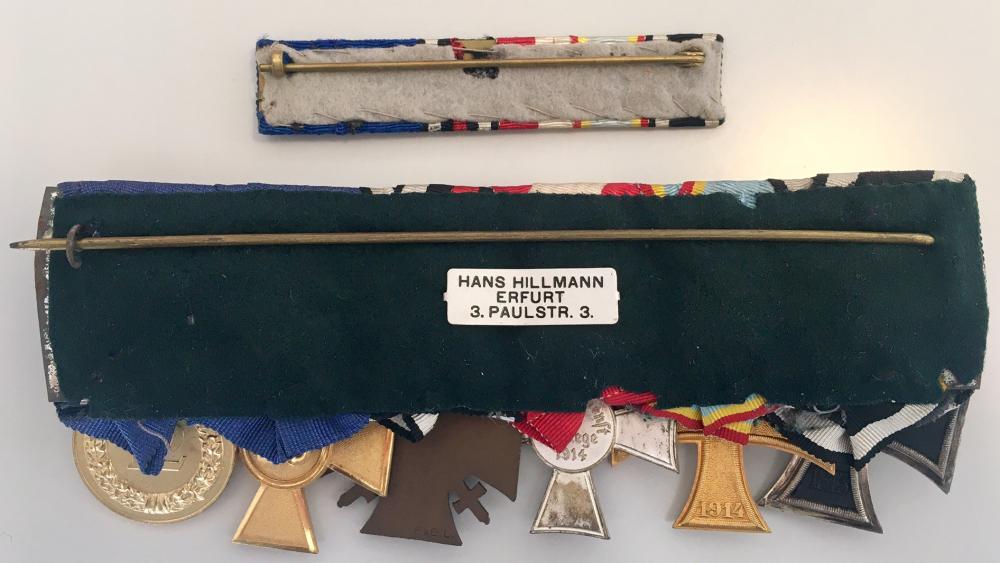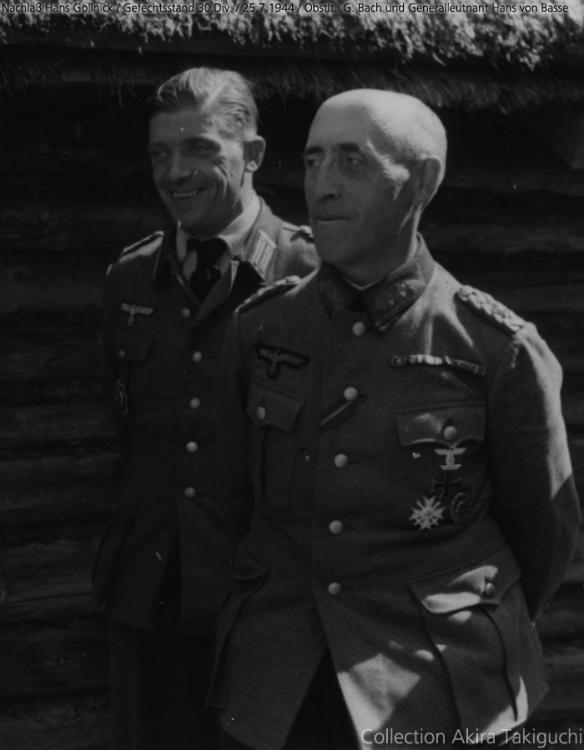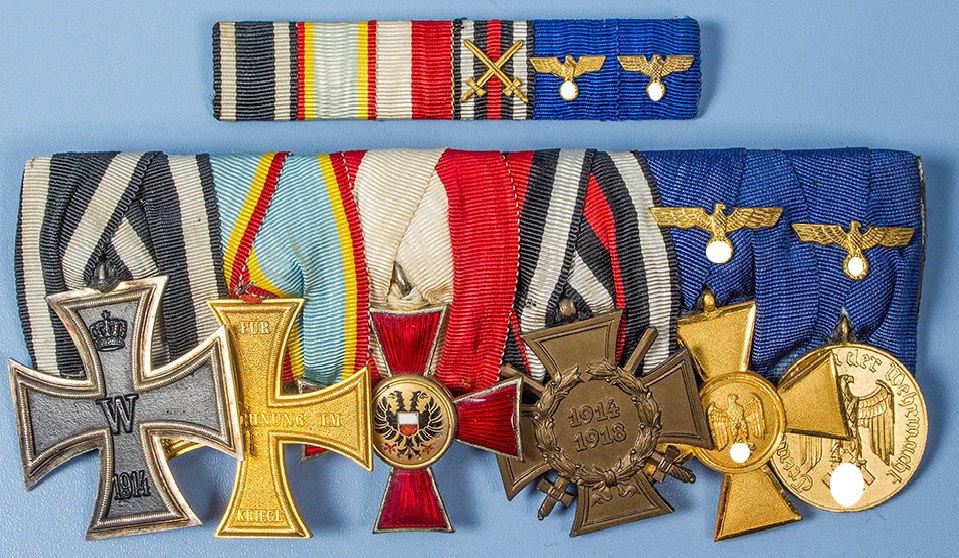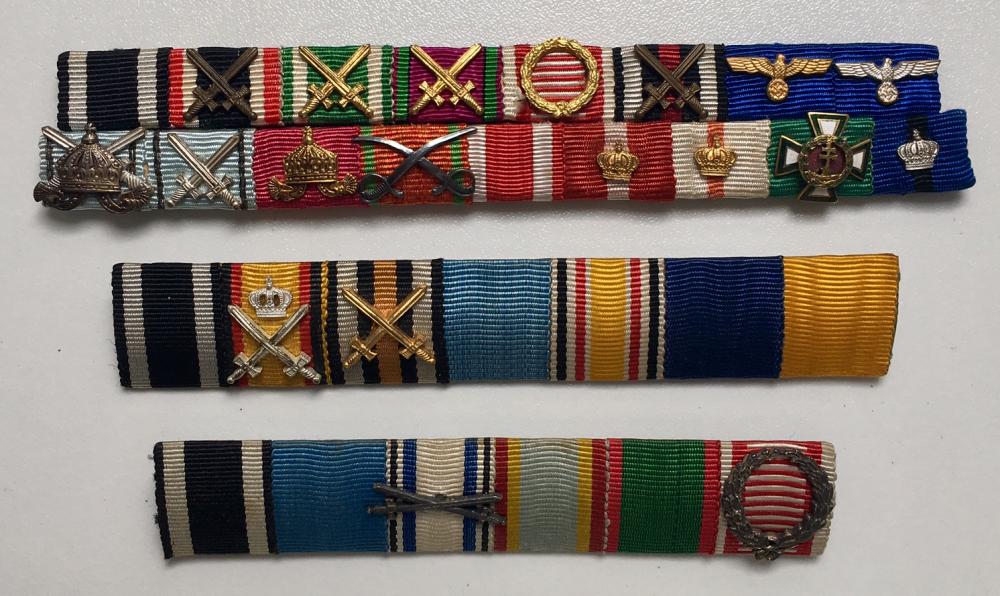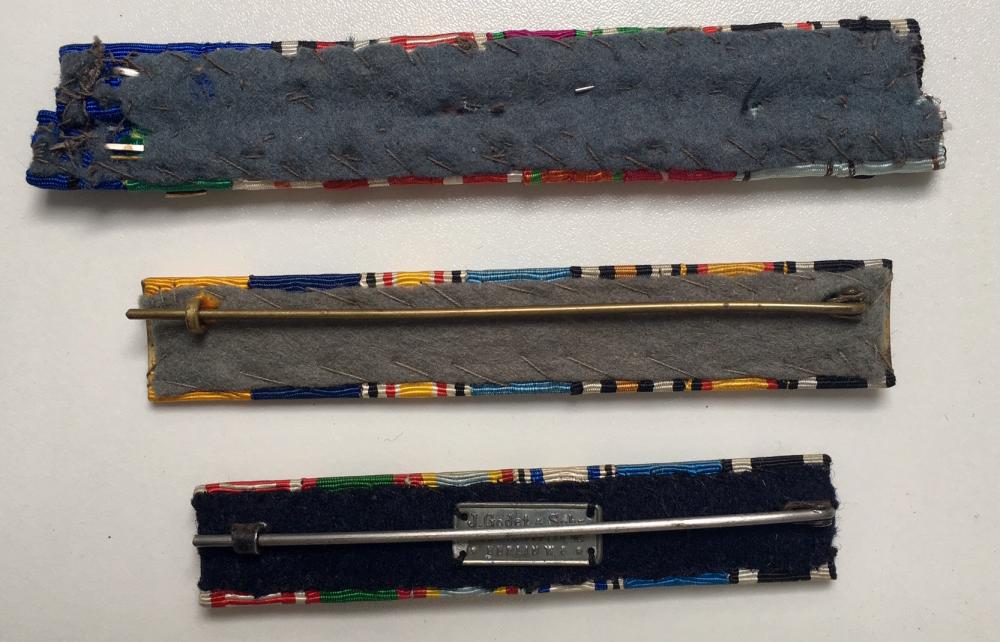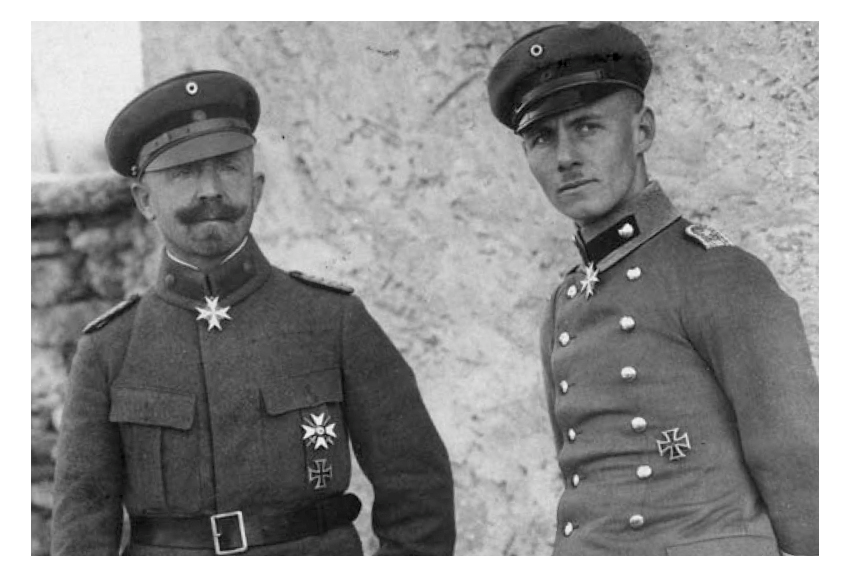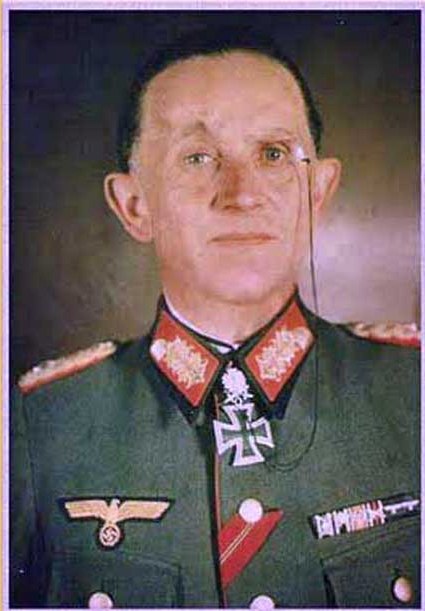-
Posts
2,868 -
Joined
-
Last visited
-
Days Won
20
Content Type
Profiles
Forums
Blogs
Gallery
Events
Store
Everything posted by Claudio
-
Hi Paul, Yes, I know... ;-) I just wanted to know more about the Hugo Oster... I can't find anything about him! I was just curious about his career and especially about the POW camp for officers (OFlag VII A Murnau), he very likely commanded in WW2 (see also : https://forum.axishistory.com/viewtopic.php?t=218675 ) Here there's an interesting article about the discovery of pictures of that OFlag and its stories... Deutschland 1945: Spektakuläre Lager-Bilder (Artikel Merkur.de) Also this article is quite interesting: BSZ 24.07.2015 Some E officers are really very elusive... Ciao, C From this website (German Camps –British & Commonwealth Prisoners of war 1939-45)
-
Dear forumites, I am trying to get more information about the above-mentioned officer. this is all I could find on him: Oberst (E) on 01.05.1934, Hugo Oster born 01.10.1882, commanding officer of WBK Gelsenkirchen (what is that???) Apparently he served in WW2 as a commander of a POW camp (OFlag) for high ranking officers (mainly Polish officers), but there's no confirmation. It is possible that this bar below was his, but there are no pictures or other solid evidence to confirm that also (see: thread on the WAF discussed by poor Rick L. among the others). Moreover there's a very interesting short Bavarian TV produced documentary about the POW camp. Any additional info (like date of promotions, dates of his orders and decorations bestowal, place of residence, date of death, etc.) it's most appreciated! ciao, C
-
Hi Dave, Many thanks for having explained it in detail; I thought so, that such officers with mixed career could count together all his years of Services... It reminds me a bit this bar Georg Meissenburg of IR 96 who also could have had a "mixed" career. But... because of the Label on the back (Erfurt) and the fact in 1938 Capell was in Erfurt, we could assume it is bar, couldn't we? I mean... if Paul found 3 officers who had this kind of combination, I don't think that there are many more with such long service and such combination, don't you think? I'd say max 5-10. A picture of Capell would definitely help, but it's like looking for a needle in a haystack... Thanks again for your Inputs again! ciao, C
-
About Paul Capell... I noticed that, according to the list, he was in Erfurt in 1938... on the back of the bar, there's a Label of the Orders/medals dealer "Hans Hillmann, Erfurt". I haven't received the bar, yet, but I need to check the reverse of the bar. That will confirm , contrary to what I thought, that this bar might have been of OLT Capell after all!
-
Hi Paul, Thanks for your fast reply. @ Laurentius: Thanks for the compliments! ;-) OTL Capell died before the war in a car accident... but I'm pretty sure this is a KM-medal bar (Kriegsmarine). Oberstleutnant (01.04.37) Paul Capell *13.07.1890 in Soest †27.01.1939 auf einer Übung mit Kfz. tödl.verunglückt 1912 im Inf.Reg.162 01.06.1920 im Polizeidienst 15.10.1935 Übertritt zum Heer 15.10.1935 Kom. IV/Inf.Reg.25 (Köslin) 06.10.1936 Kom. II/Inf.Reg.94 (Köslin) 10.11.1938 beim Stab Inf.Reg.71 (Erfurt) 27.01.1939 tödl.verunglückt Here's the link to the history of : Generalleutnant Hans Basse I don't think is Basse, his ribbon bar seems a bit "longer" on this Picture, although the combination of decorations is "almost" confirmed by the link above mentioned: according the the data of that link he had also the Hamburg Hanseatenkreuz. I think it must be Kapitän z.See Eugen Richter, commander of the III. Marine-Flak-Brigade in Brest (France) : http://www.lexikon-der-wehrmacht.de/Gliederungen/Marineflak/MFlakBrig3.htm, just my feeling about it. Now I have to find a photo of him... Ciao, C
-
Dear forumites and friends, I'd like to know if it's possible to ID this medal bar that I recently purchased: Preußen, Eisernes Kreuz 2. Kl. 1914 am Kämpferband (OEK 1909), E gs/S; Mecklenburg-Schwerin, Militär-Verdienstkreuz 2. Kl. am Kämpferband, 76‘615 Verleihungen im 1. WK (OEK 1352), Br vg; Lübeck, Hanseatenkreuz 1915-1918, ca. 8‘000 Verleihungen (OEK 1265), vs Ku E; Deutsches Reich 1933-45, Ehrenkreuz für Frontkämpfer (OEK 3803/1); Deutsches Reich 1933-45, DA 1. Klasse für 25 Dienstjahre (OEK 3852); Deutsches Reich 1933-45, DA 3. Klasse für 12 Dienstjahre (OEK 3854). In my opinion is a typical KM combination... see also the eagles on the ribbon bar. Thanks in advance for your comments/Inputs. Cheers, Claudio
-
Hi Chris! Now you HAVE to visit the Kolovrat where Schörner for his actions earned the PlM near Kobarit (Caporetto in Italian, Karfreit in German), where the German (Alpenkorps) and Austrian troops lauched their offensive on a foggy and rainy October 23rd 1917. Soon it will be 100 years anniversary, sure enough, as I spoke with the Museum director in Kobarit a couple of years back, (beautiful Museum, they organize excursions to the various front https://www.kobariski-muzej.si/gefuhrte_touren/fuhrungen_zu_ehemaligen_frontabschnitten/ , I have been there twice!), they will have something organized this year. Every year, he told me, on that very date they organize a trekking trip to the Matajur and repeat the route taken by Rommel to get to the summit and completly take by surprise and surround all the Italian troops in this part of the front (Rommel alone with its Wurttembergian mountain "Kampfgruppe" of 2-3 reinforced companies took 9'000 prisoners). The first being awarded was Schörner; in fact that award was intented for the first officer who could take the Kolovrat heights. The Central power's generality thought this might have been the furthest break-through point to achieve during that offensive. But Rommel went on, took the oppurtunity to fully use the favorable momentum, also driven by the fact that he badly wanted to win the PlM, too. Finally, thanks also to Major Sproesser's insistance and recommendations (commanding officer of the whole Wurttembergian mountain troops/battalion and direct superior of Rommel then Oberleutnant, same rank of Schörner too), Rommel got his so ardently desired PlM (as well as Major Sproesser did receive it... see picture!). I would love to visit these places again... the history there is so great! Food and locations also! Slovenians are very friendly and most can speak Italian and English well. So interesting; you can still find a lot of trenches and paths to walk... all very well described. The view from the Matajur over the valley of the Isonzo/Soca river (North) and on the plains towards Udine and Triest (South) is just breathtaking and it shows so well how important was to take this Mount for the Central powers... after that point there were no natural obstacles until Venezia, apart from the rivers (like Piave where the offensive was eventually stopped). If they had taken the bridges or the western banks of the river Piave, the Central powers troops would have taken Venezia and the Po plains ... Very interesting stuff... ;-) Ciao, C
-
Hi Chris! You are totally right to say it's a piece of history; it all boils down to how much are you prepared to pay for it. I think that you did well buying the ring; I'm sure that Schörner wore much more his "Leiberring" and it was quite special to him. Maybe he was wearing it during the assault at Caporetto in October 1917, who knows it?... for sure not the medal bar... Eur 1'500.- was the value of the medals if they were worn by a Oberstleutnant Schmidt, Müller or even Arschloch... I was ready to pay up to 3 times the price, but no more than that. For that Price however, I'd have liked to have seen the reverse of the bar, just to be on the safe side. It's also possible that he had 2 bars... some officers owned many bars, like a civilian attire "Frackspange" and also a normal "Ordensspange" to be worn with the uniform. I heard of a Colonel/Oberst who had 6 (!) EK1 1914! I remember that Th. had for sale also the medal bar of General Deitrich Von Saucken, 27th recipient RK with oak leaves, swords & diamonds, starting price Eur 5'000.- and he didn't sell it (see Pictures below). Also in this case there weren't any pictures of the back of the bar neither Information about the provenence (who owned it before, from where it came... etc.). Moreover the combination's of von Saucken's medal bar was somewhat less unique and interesting. Again, Chris, well done with that ring... it fits perfectly in your collection and, if I can say so, to your Leiber "addiction"... I'm also quite interested in that Regiment, the Alpenkorps and especially the "Gebirgsjäger"... being a Swiss! C
-
During war German soldiers weren't allowed to wear the full bar, it was prohibited (that's why so many bars weren't updated with the EK 1939 clasp or the WiO for example), just feldspangen was allowed. Although I have seen lots of Pictures with soldiers during WWII wearing medal bars, especially at weddings or unofficial/private Events. Here some other stuff of Schörner that finally weren't offered on the auction. Enjoy! ;-) Claudio
-
Interesting... if you could find a deal to buy stuff from him directly you would have spent much less money... and he could probably got more out of it! Btw on the catalogue it was mentioned that this stuff came directly from the family (Familienbesitz)... so that was not entirely true... or was it???
-
http://www.lexikon-der-wehrmacht.de/Personenregister/S/SchoernerF-R.htm this is one which he's wearing is not exactly the same (look at the order of the medals) @ Chris: I noticed that... But it didn't show it as well as the back of the bar. For that price I would have put more pictures in the catalogue...




